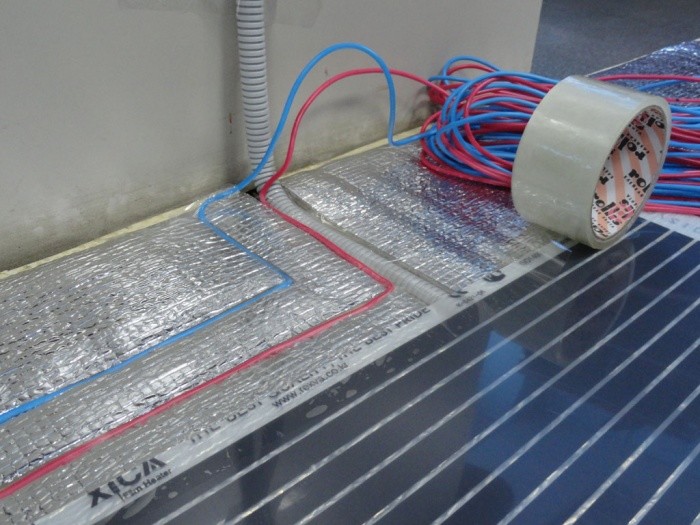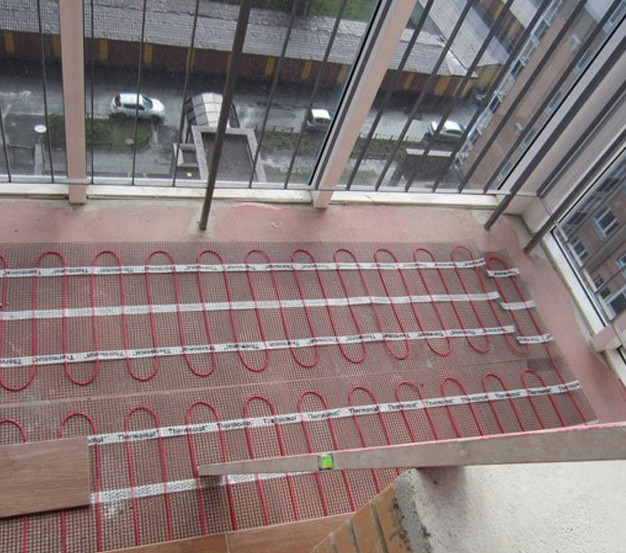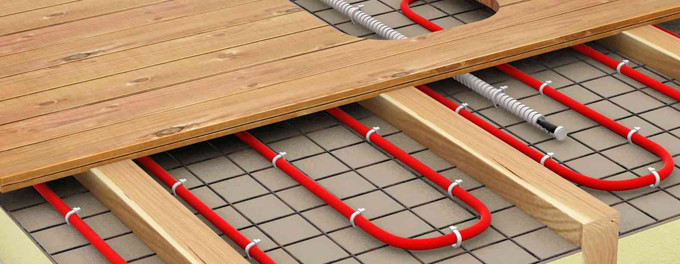What kind of underfloor heating should you choose for your balcony?
If earlier the balcony was an analogue of a storage room where seasonal household items were stored, nowadays it is increasingly being turned into a lounge area, making a balcony or loggia a charming winter garden, or an office, or a compact gym. If an apartment has two loggias, there is no question of choice, and the living space is increased by additional square meters.
However, there is one significant problem: the room needs to be heated. The optimal solution ismake a warm floor on the balcony. This task is not as difficult as it may seem at first glance. If you follow all the technological rules and carefully choose a warm floor on the balcony, you can do it yourself.
There are several types of heating systems on the market:
- heating mats;
- heating cable;
- infrared film;
- water floor.
In which cases will a heating system be most effective?
Heating mats
Underfloor heating mats - is a fiberglass mesh (10x10 mm mesh size) to which a high-resistance cable with a diameter of 2-3 mm is attached, laid in a snake. The pitch of the coil is 50 mm.

Types of heating mats:
- single-core;
- two-core.
In the first case, both ends of the cable must be connected to the thermostat. In the second case, an electric cable is hidden in the sleeve in parallel with the heating element. As a result, the electromagnetic field is minimized, which is quite noticeable in a single-core sample (although within sanitary standards).
They are easy to install yourself in a "wet" way. What is its essence?
The substrate for heating mats is a concrete surface or old tiles. Since no additional preparatory work is required, the task of laying the mats is quite simple and budget-friendly.
First, you need to spread the glue over the entire surface. It will take about 7 days for it to dry completely. Laying insulation material will reduce heat loss.
Next.heating mat is cut into separate fragments (do not touch the cable!) and laid on the floor. Install the thermostat, and connect the system to the power supply.
To fix the mat, porcelain stoneware tiles are laid on the mat.
Advantages of this type of system:
- budget price (single-core is significantly cheaper than two-core);
- the thickness of the base does not increase;
- little construction waste after installation.
Disadvantages:
- high susceptibility to even minor mechanical stress. Therefore, it is not recommended to place heating mats under furniture;
- inability to accumulate heat.
This electricunderfloor heating on the balcony acts as an element designed to supplement the amount of heat radiated by the main source. This is usually the case when it is impossible to make a cement-sand screed, the system is installed in an old building, or there is a time limit.
Heating cable
The heating element of this system is a cable heating section, which is based on a two-core shielded cable with a specific heat emission of 18 W/m. It is connected to the heating core on the one hand and to the supply conductor protected by a sleeve on the other. Controlling a system capable of providing t=+250+3500 is carried out using electronic thermostats.

Cableunderfloor heating on a cold balcony should be installed only after it has been insulated and modern heat-insulating windows have been installed. Otherwise, heat energy will "heat" the street. If a cement-sand screed with a thickness of 45 mm or more is not made, and there is no insulation and waterproofing, the cable system will heat the ceiling of the loggia/balcony from below.
Couplings are installed in the screed, the location of which must be planned before starting work. Next, lay the mounting film, and on it - a wave-shaped cable with a bending radius of at least 10 times the cable diameter. The knots must not intersect! Fixation is carried out with mounting tape.
The most effective top layer is tile, which is characterized by high thermal conductivity. This system is the best of all variationsunderfloor heating on the balcony and under linoleum.
Several heating cables can be connected to one thermostat. It will take at least 3-4 weeks for the screed to dry completely - take this into account before starting installation.
Advantages:
- a small electromagnetic field is absolutely safe for humans;
- high wear resistance of the cable due to the design features (use of low power heating the cores);
- long service life;
- easy styling;
- high level of fire safety;
- substantial insurance against damage.
Disadvantages of electric underfloor heating on the balcony:
- high requirements for preparation for installation;
- no technological violations are allowed during installation;
- long waiting period.
Infrared film for floor heating on the balcony
The basis of functioningInfrared films for flooring is capable of generating long-wave thermal radiation. Its greatest advantage is heat accumulation, secondary heat transfer and partial heating of the balcony/ loggia walls.
The infrared system consists of so-called carbon strips (film elements) that are soldered between layers of lavsan or polyester. The strips themselves are a carbon paste made from crushed slate. The material for the conductors is copper or its alloy with silver. The strips are connected to the conductors in parallel. The mains voltage is standard - 220 W.
During installationinfrared film on the floor a clear sequence of actions must be followed.
- Make a screed.
- Place the heat-reflective substrate.
- Cut the heating elements strictly along the dotted lines.
- Lay the IR material on the substrate.
- Mount the temperature sensor and thermostat.
- Install electrical contacts on the film.
- Insulate the network connection points with bitumen.
Atinsulation of the floor on the balcony with the help of infrared film It should be borne in mind that hard finishing coatings require a hard substrate, and soft ones (linoleum, carpet) - on the contrary.
Underfloor heating on the balcony
Installunderfloor heating on the balcony - is a very attractive idea, but there are a number of significant limitations. One of them is that the floor level in the room and on the loggia should be the same.

What is itunderfloor heating on the balconyThese are batteries placed over the entire surface of the floor, through which the hot coolant is transported. To increase the efficiency of this system, foil with heat-reflective characteristics or high-density foam is usually placed on the waterproofing layer.
Installation of a water floor involves the following steps:
- concrete screeding is performed to eliminate unevenness;
- heat and waterproofing materials are laid;
- the pipeline is mounted using special mats or brackets.
Only seamless metal-plastic pipes can be used. For a small balcony, the ideal option for placing the route is a snake scheme. You need.
- carefully bend the pipes;
- connect them to the hot water system.
Before you concrete the route with the coolant, you need to test it to make sure there are no leaks.
Is it possible to install a water floor on the balcony, and how much of a good solution is it?
Given the fact that this system significantly weighs down the floor, it is not recommended to install it on balconies: this can lead to its collapse. Experts recommend installing water floors only on loggias.
Thanks to the variety of underfloor heating systems, it is easy to choose the option that will be optimal in terms of cost, performance and technical capabilities.